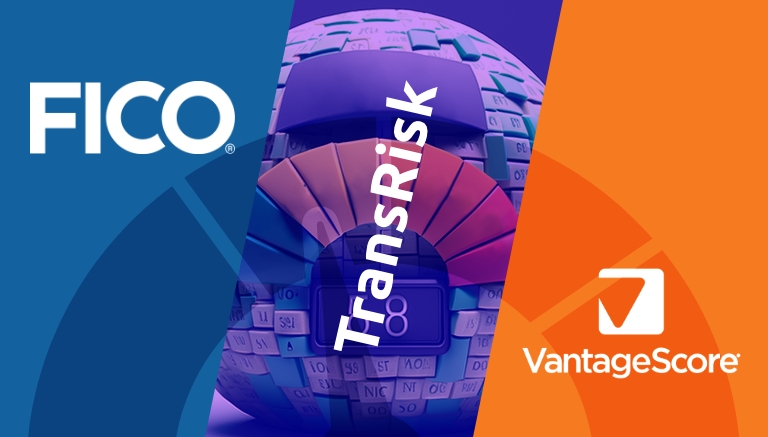Are you wondering how your credit score is calculated? There are many different credit scoring models out there, but the three most commonly used are the FICO score, the TransRisk score, and the Vantage score. Each of these models uses a slightly different formula to determine your creditworthiness. In this blog post, we’ll take a closer look at how these scores compare and which one you should pay the most attention to.
FICO Score
The FICO score is the most widely used credit scoring model in the United States. It was created by the Fair Isaac Corporation and is used by 90% of top lenders. The FICO score ranges from 300 to 850, with a higher score indicating a better creditworthiness. The FICO score is calculated using five different factors:
- Payment history: Your payment history accounts for 35% of your FICO score. This includes on-time payments, late payments, missed payments, and any accounts that have gone into collections.
- Credit utilization: Credit utilization makes up 30% of your FICO score. This is the amount of credit you are using compared to your total available credit. It’s important to keep your credit utilization below 30% to maintain a good FICO score.
- Length of credit history: The length of your credit history accounts for 15% of your FICO score. This includes the age of your oldest account, the age of your newest account, and the average age of all your accounts.
- Credit mix: Credit mix makes up 10% of your FICO score. This is the variety of credit accounts you have, such as credit cards, loans, and mortgages.
- New credit inquiries: new credit inquiries make up the final 10% of your FICO score. This includes any applications for new credit, such as credit cards or loans.
TransRisk Score
The TransRisk score is a credit scoring model developed by TransUnion, one of the three major credit bureaus. The TransRisk score ranges from 300 to 850, just like the FICO score. However, the TransRisk score uses a slightly different formula to calculate your creditworthiness. The TransRisk score takes into account the following factors:
- Payment history: Your payment history accounts for 35% of your TransRisk score, just like your FICO score.
- Debt-to-income ratio: The debt-to-income ratio makes up 30% of your TransRisk score. This is the amount of debt you have compared to your income.
- Credit usage: Credit usage accounts for 15% of your TransRisk score. This is the amount of credit you are using compared to your total available credit, just like your FICO score.
- Credit age: Credit age makes up 10% of your TransRisk score. This includes the age of your oldest account, the age of your newest account, and the average age of all your accounts, just like your FICO score.
- Recent inquiries: Recent inquiries make up the final 10% of your TransRisk score. This includes any applications for new credit, just like your FICO score.
Vantage Score:
VantageScore is a credit scoring model that was introduced in 2006 by the three major credit bureaus, namely Equifax, Experian, and TransUnion. It is a competitor to the widely used FICO score and provides a similar assessment of a person’s creditworthiness.
The VantageScore was developed to provide a more accurate and consistent credit score across the three credit bureaus. The model uses a similar range of scores as FICO, from 300 to 850. Like FICO, a higher VantageScore indicates better creditworthiness, while a lower score suggests a higher risk to lenders.
VantageScore is known for its use of trended credit data, which tracks a borrower’s credit behavior over time. This can give lenders a better understanding of a borrower’s financial habits and help them make more informed lending decisions.
Another key feature of VantageScore is its use of machine learning algorithms, which enable the model to adapt and improve over time. This allows for more accurate predictions of credit risk and helps lenders to better manage their lending portfolios.
Overall, VantageScore provides a valuable alternative to FICO and offers consumers and lenders a more diverse set of credit scoring options.
The VantageScore is calculated using a proprietary algorithm developed by VantageScore Solutions, LLC. The algorithm considers several factors to determine a person’s creditworthiness, including:
- Payment history: This is the most important factor in determining a VantageScore. It considers how regularly you make payments on your credit accounts and whether you’ve missed any payments in the past.
- Age and type of credit: The VantageScore considers the length of your credit history and the types of credit accounts you have, such as credit cards, mortgages, and personal loans.
- Credit utilization: This factor considers how much of your available credit you’re currently using. A high credit utilization ratio can indicate that you’re relying too heavily on credit.
- Total debt: This factor considers the total amount of debt you have, including both revolving and installment accounts.
- Recent credit behavior and inquiries: This factor considers any recent changes to your credit accounts, such as opening new accounts or making large purchases.
The VantageScore algorithm also takes into account trended credit data, which tracks changes in a borrower’s credit behavior over time. This allows lenders to better assess a borrower’s creditworthiness and make more informed lending decisions.
Overall, the VantageScore algorithm is designed to provide a comprehensive view of a person’s creditworthiness, taking into account a wide range of factors that can impact their credit score.

0 Comments